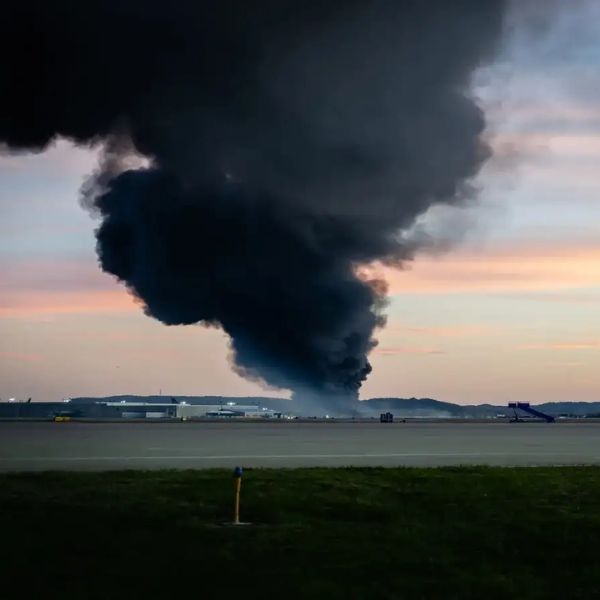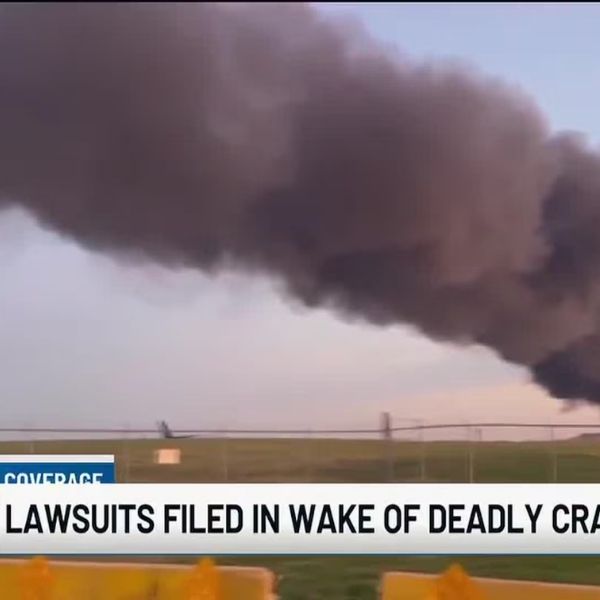We still don’t know the final death toll from the Nov. 4 UPS crash at Muhammad Ali International Airport, but it’s clear that a southerly breeze may have spared Louisville from an even greater tragedy.
With 12 people confirmed dead and others still missing or injured, calling the city “lucky” feels difficult. Yet, if UPS Flight 2976 had taken off to the north, the devastation could have extended across the Watterson Expressway, Phillips Lane hotels, or even residential neighborhoods and the University of Louisville.
Airplanes typically take off into the wind to generate lift at lower speeds. A northbound MD-11, driven by opposite wind conditions, might have caused catastrophic damage across one of the city’s busiest corridors.
A Risk Decades in the Making
Louisville’s airport sits in a densely developed urban area, surrounded by highways, businesses, and the Kentucky Exposition Center. That’s because, more than 50 years ago, city leaders decided not to relocate the airport to a rural county.
Back in 1973, plans were underway to build a regional airport in Finchville—in Shelby County—but opposition from local officials shut it down. So, when then-Mayor Jerry Abramson pushed expansion in the late 1980s, the city simply expanded Standiford Field instead of moving it.
Denver Made a Different Choice
While Louisville stayed urban, Denver chose differently. Around the same time, the city built its $4 billion Denver International Airport, 25 miles outside downtown, precisely to avoid the danger of plane crashes in residential zones.
That concern wasn’t unfounded. In 2001, an American Airlines Airbus A300 crashed into a Queens neighborhood, killing 265 people. Similarly, a 1992 El Al cargo jet crash in Amsterdam and a 1972 United Airlines accident near Chicago Midway Airport caused dozens of fatalities on the ground.
A City-Bound Airport That’s Here to Stay
By the time Louisville expanded its airport in 1988, the idea of relocating was long gone—partly due to fears of lawsuits and land disputes. Instead, the city bought nearby homes and businesses and extended the existing facility.
Standiford Field was originally built for propeller aircraft—long before commercial jets existed. The first jets didn’t land there until 1959, and Eastern Airlines began the first regular jet service in 1962.
Had the city built Finchville Airport decades ago, perhaps the UPS crash would have only harmed farmland. Then again, industry might have grown around that site too. We’ll never know.
Tragedy and Perspective
The Nov. 4 crash is only the second deadly commercial accident in the airport’s history, the first being a 1953 crash that killed 25 soldiers bound for Fort Knox.
While it’s tempting to dwell on “what ifs,” the odds still overwhelmingly favor safety. A 2023 MIT study found the chance of dying in a plane crash between 2018 and 2022 was 1 in 13.7 million.
Still, for those who lost friends and family, Nov. 4 will forever mark a day of heartbreak. The NTSB investigation may uncover why an engine detached mid-takeoff, but it can’t undo the loss burned into Louisville’s memory.
This article has been carefully fact-checked by our editorial team to ensure accuracy and eliminate any misleading information. We are committed to maintaining the highest standards of integrity in our content.











Leave a Comment